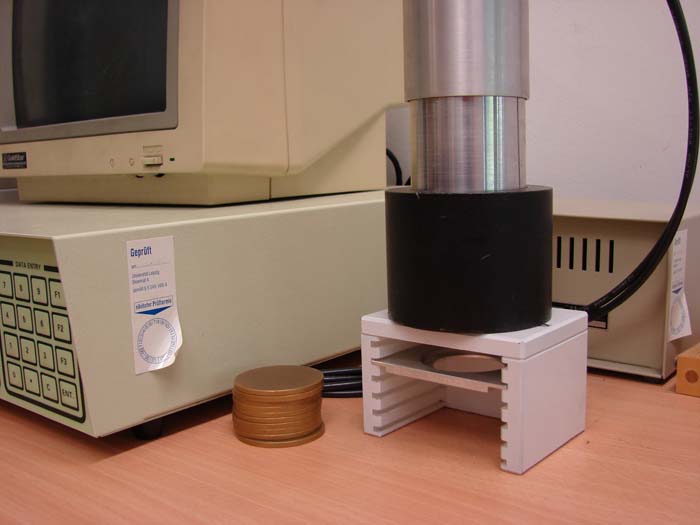ASTM C1410 Gross Alpha/Beta Counting of Low-Level Waste
The ASTM C1410 standard method is a critical component in the characterization and monitoring of low-level radioactive waste (LLRW). This protocol provides detailed procedures for gross alpha/beta particle counting to ensure accurate quantification of radionuclides present. LLRW, which includes materials contaminated with small amounts of radionuclides, poses unique challenges due to its potential to emit harmful radiation.
The testing process involves the preparation and handling of samples in a controlled environment to prevent contamination. Samples are often collected from various sources such as industrial processes, medical facilities, or research labs. The ASTM C1410 method is particularly useful for materials with low levels of alpha and beta emitters, which are common in LLRW.
The test apparatus used includes a scintillation detector capable of detecting both alpha and beta particles. This equipment is calibrated to ensure consistent and accurate readings. The process begins by ensuring the integrity of the sample container, followed by thorough preparation steps that may include sieving or homogenization depending on the nature of the waste.
The most critical aspect of ASTM C1410 lies in its precise counting methods. Samples are placed in a shielded area to minimize external interference and then subjected to alpha/beta particle detection using scintillation counters. The instrument captures emissions from radionuclides, which are then analyzed for their energy levels and quantities.
The results of the ASTM C1410 test provide essential data on the radioactivity content of LLRW, facilitating compliance with regulatory standards such as NRC (Nuclear Regulatory Commission) guidelines. This information is crucial for managing waste safely and ensuring that it meets disposal requirements without unnecessary restrictions or costs.
The methodology also helps in the optimization of waste management processes by identifying the most radioactive components within a given batch, allowing for more efficient treatment and disposal strategies. The test ensures that all LLRW adheres to strict safety protocols, thereby protecting both personnel and the environment.
In summary, ASTM C1410 is an indispensable tool in the field of radiation testing, offering reliable data on alpha and beta emissions from low-level radioactive waste. Its application extends beyond mere compliance; it also supports safer handling practices and more effective waste management strategies.
Benefits
The ASTM C1410 method offers several advantages in the field of radiation testing:
Industry Applications
| Application | Description |
|---|---|
| Industrial Waste Management | This involves the characterization of waste generated in industrial processes, ensuring compliance with regulatory standards. |
| Medical Waste Handling | Ensures that medical facilities handle and dispose of radioactive materials safely and efficiently. |
| Research Lab Monitoring | Supports the safe handling and disposal of radioactive materials used in research environments. |
| Nuclear Power Plant Waste Management | Aids in the efficient management of waste generated by nuclear power plants, ensuring safety and compliance. |
| Environmental Protection Agencies | Facilitates the monitoring of environmental contamination levels due to radioactive waste. |
Why Choose This Test
The ASTM C1410 method is chosen for its reliability and accuracy in quantifying alpha and beta emissions from LLRW. It ensures that waste materials are handled safely, reducing the risk of radiation exposure to personnel and the environment.
The standardized approach provided by this test allows for consistent results across different laboratories, enhancing confidence in the data generated. This consistency is particularly important when dealing with regulatory bodies or when comparing results from various facilities.
Moreover, ASTM C1410 supports more efficient waste management practices by identifying the most radioactive components within a batch, allowing for targeted treatment and disposal strategies. This not only optimizes resource use but also ensures that all waste is managed according to strict safety protocols.
The method’s precision in detecting low levels of alpha and beta emissions makes it indispensable for ensuring compliance with international standards such as NRC guidelines. By adhering to these standards, organizations can avoid potential legal issues and maintain a safe working environment.





